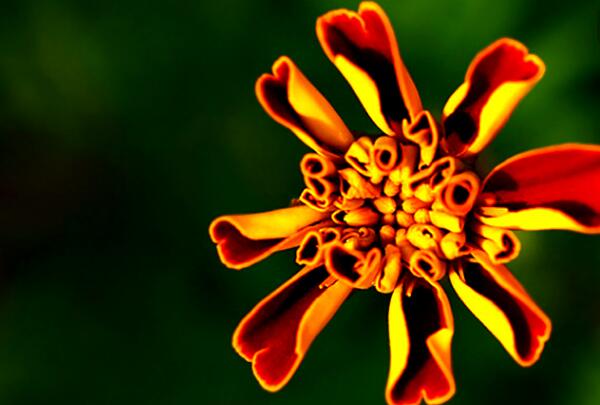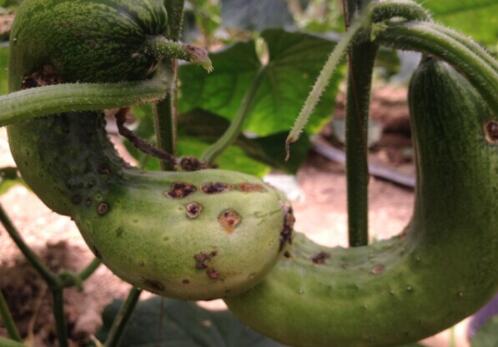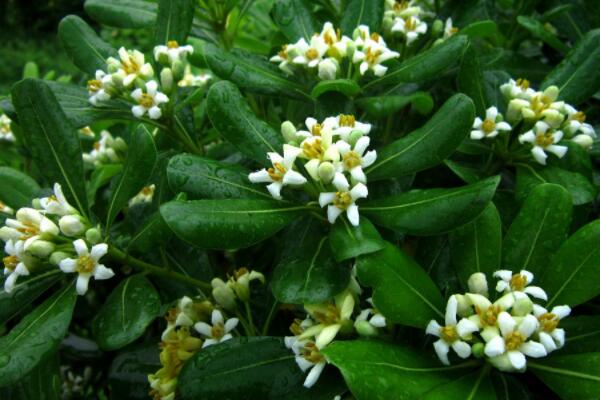When will the malachite grass of Compositae be sown? How to plant it? What is the effect?
Peacock grass, also known as small marigold, red and yellow grass, chamomile, stinky chrysanthemum is native to Mexico. Now it is widely cultivated in gardens and courtyards. So when will the malachite grass of Compositae be sown? How to plant it? What is the effect? Let's have a look.

When will the malachite plant be sown?
Malachite seeds are a good time to sow from November to March every year. If they are sown in winter, they will blossom in March to May of the following year. You can sow seeds in flowerpots or live in the courtyard. After a month of potted plants, the seedlings can be dug up and planted. If you are a summer cuttage, it will blossom from August to December, whether it is inserted into a flowerpot or directly planted in the ground. Seeds can be sown all the year round. However, due to the limitation of flower conditions, the two festivals of May Day and National Day spend the largest amount of flowers. The sowing time of the middle and lower reaches of the Yangtze River is usually from August to November because the air temperature is higher than 15 ℃ (or under the condition of heating and heat preservation). In the south with a warm climate, seeds can be sown all the year round, while spring sowing is popular in the north. If the seedlings are raised in early spring, attention should be paid to ensuring a certain growth temperature to avoid growth stagnation as far as possible. Sowing should use loose artificial media, bed sowing, box sowing seedlings, conditions can be used to raise seedlings. After disinfection and slightly covering after sowing, the optimum temperature for germination of malachite was 22 ~ 24 ℃.
How to plant it?
1. Illumination: Peacock grass is a positive plant, which requires sufficient sunlight for growth and flowering, and sufficient light is also beneficial to prevent the overgrowth of plants. But from July to September, you need to avoid direct sunlight and cool down by shading around noon.
2. Temperature: the temperature can be reduced from 22 ℃ to 18 ℃ after potting, to 15 ℃ after a few weeks, and to 12: 14 ℃ before and after flowering. Generally speaking, as long as it is above 5 ℃, it will not be frozen, and it can grow well in the range of 10 ℃ ~ 30 ℃.
3. Watering: the key to water management is to use a medium with good drainage. Although it is important to keep the medium moist, it is necessary to dry properly before each watering. Of course, the medium can not be too dry and cause the plant to wither.
4. Fertilization: the malachite planted in the soil can be mixed with compound fertilizer as base fertilizer before the medium is put into the basin, and 20, 10, 20 and 14 Murray 14 fertilizers can be used in the case of insufficient fertility.
What is the effect?
1. Malachite grass is a kind of herb with good medicinal value in traditional Chinese medicine. The efficacy and function of different parts of malachite grass are different. Malachite grass has a good therapeutic effect on suction tract infections such as cough, dysentery, wind and fire eye pain and so on.
2. Malachite grass also has a good therapeutic effect on female mastitis. Many people use malachite grass in Yi medicine. Malachite grass can treat snake bites, dizziness and fever.
3. The efficacy and function of malachite have been recorded in many of our ancient medical books. Malachite can also treat infantile pertussis, dysentery, ribs, mastitis, boil, etc., and malachite has a good effect on toothache and stomatitis. Eye swelling and so on.
4. Malachite grass not only has good medicinal value, but also plays a very good role in people's and health care. The flowers and leaves of malachite grass can be used as medicine, which has the effect of clearing heat and resolving phlegm, as well as invigorating blood and dredging menstruation. It has a very good effect on tracheitis. In Russia, some residents feel that eating malachite grass often has the effect of prolonging life.
Time: 2019-04-09 Click:
- Prev

Common fruits and vegetables cucumber, banana, pear, citrus scab how to prevent and cure? What kind of medicine should I take?
Scab is a quarantine disease, which not only harms cucumber, but also harms zucchini, melon, pumpkin, banana, pear, citrus and so on. Then how to prevent and cure scab? What kind of medicine should I take? How to prevent and cure cucumber, banana, pear and citrus scab? Cucumber: (1) selecting disease-resistant varieties
- Next

When does the evergreen shrub Haitong usually bloom? How much is the seedling price? Can I make a potted plant? How to plant
Haitong is also known as paulownia, alum, Qilixiang, Baozhu Xiang, Shan Ruixiang, Haitong flower genus, evergreen shrubs or small trees, up to 6 meters high. When does Haitong usually blossom? How much is the seedling price? Can I make a potted plant? How do you plant it? I learned from the seedling base in Shuyang, Jiangsu Province.
Related
- Fuxing push coffee new agricultural production and marketing class: lack of small-scale processing plants
- Jujube rice field leisure farm deep ploughing Yilan for five years to create a space for organic food and play
- Nongyu Farm-A trial of organic papaya for brave women with advanced technology
- Four points for attention in the prevention and control of diseases and insect pests of edible fungi
- How to add nutrient solution to Edible Fungi
- Is there any good way to control edible fungus mites?
- Open Inoculation Technology of Edible Fungi
- Is there any clever way to use fertilizer for edible fungus in winter?
- What agents are used to kill the pathogens of edible fungi in the mushroom shed?
- Rapid drying of Edible Fungi

